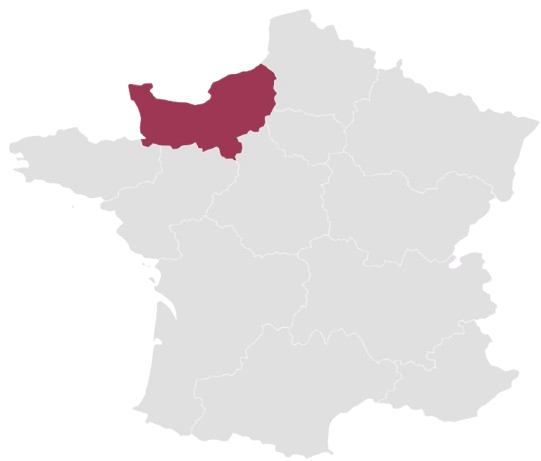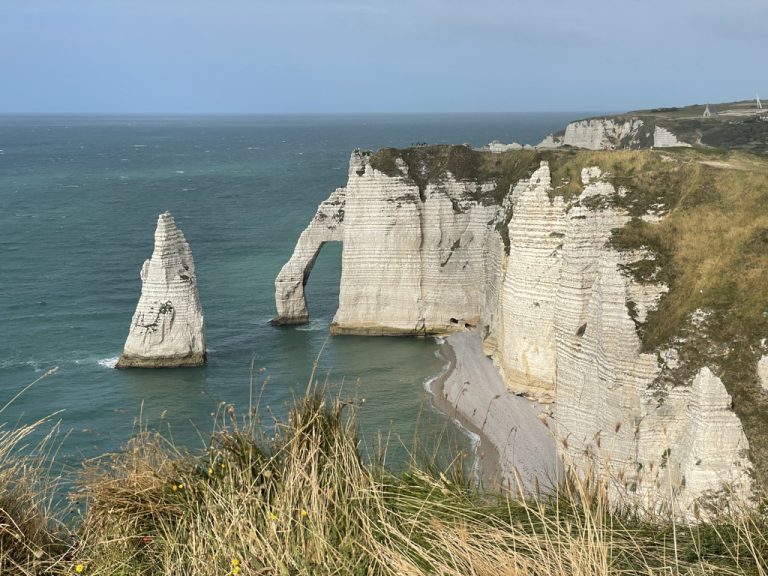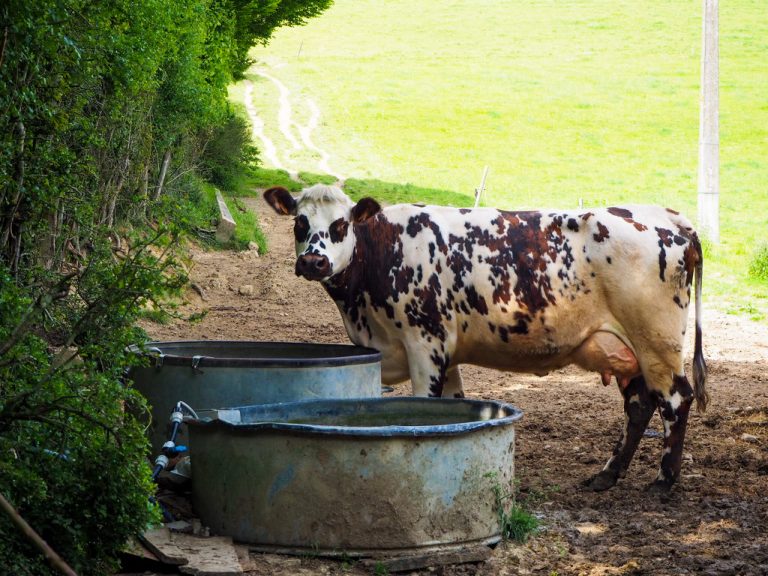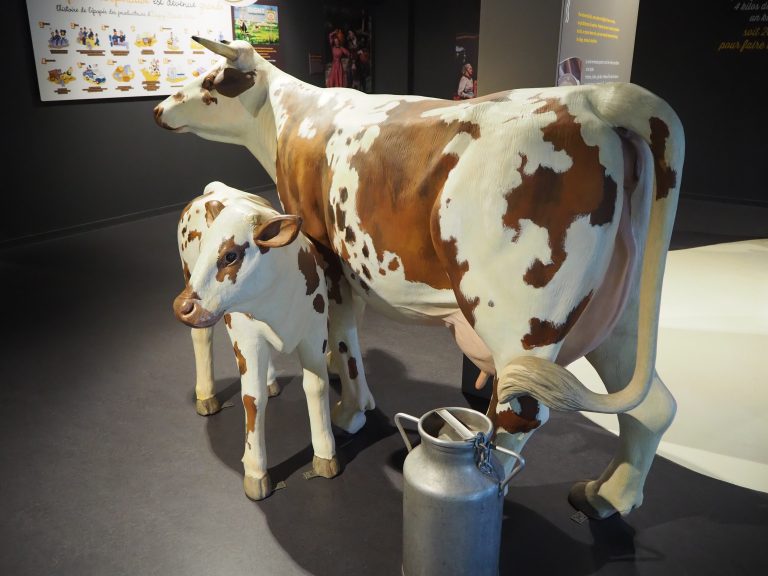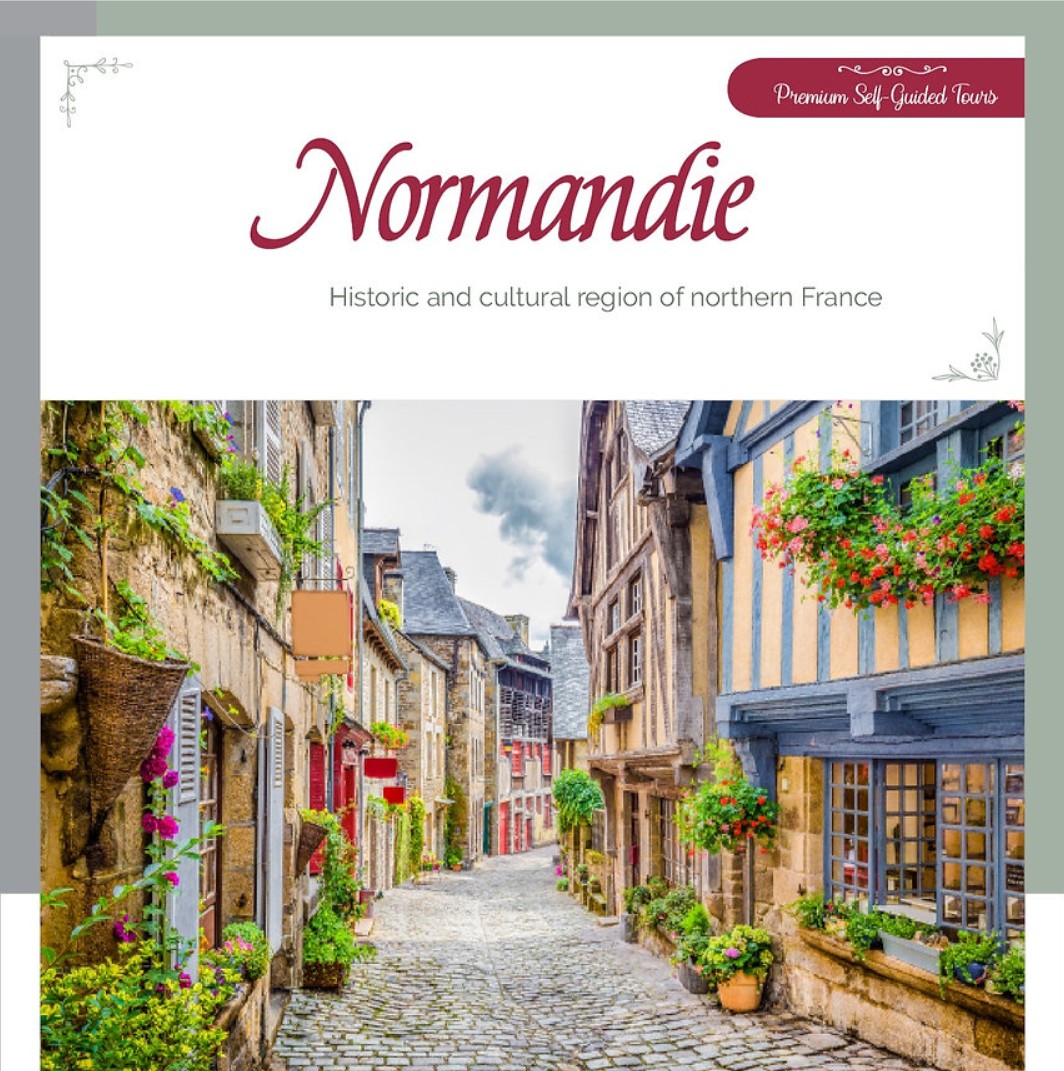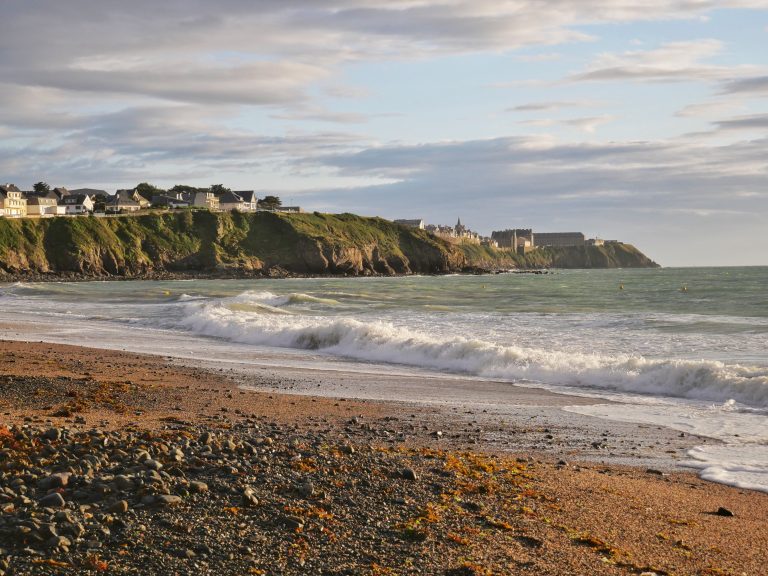
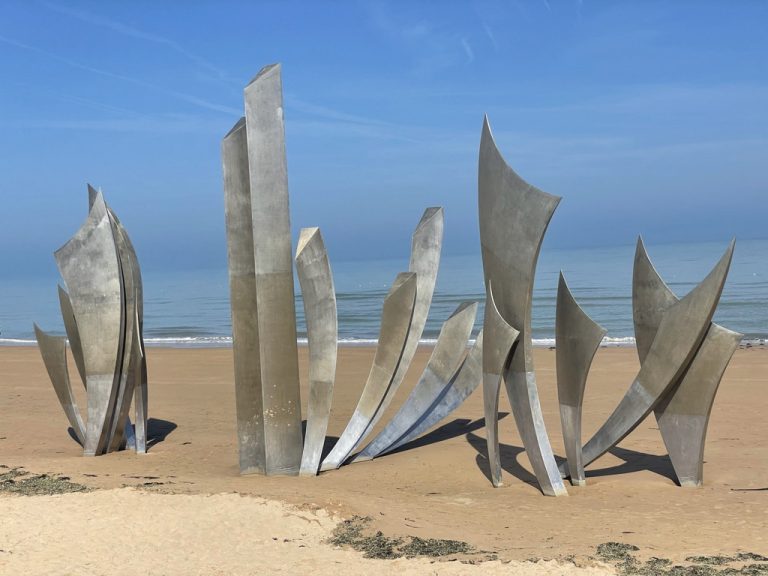

When traveling through Normandy, it’s impossible not to feel the weight — and the gratitude — of history. No place captures this more poignantly than Bayeux and the nearby D-Day landing beaches. Though small and charming, Bayeux quietly serves as a gateway to some of the most meaningful sites in the world.
Bayeux: Timeless and Tender
While many towns in Normandy were devastated during WWII, Bayeux was miraculously spared. The result is a city that feels like a gentle blend of past and present. Stroll its quiet streets and you’ll find medieval half-timbered houses, friendly cafés, and — the true crown jewel — Bayeux Cathedral.
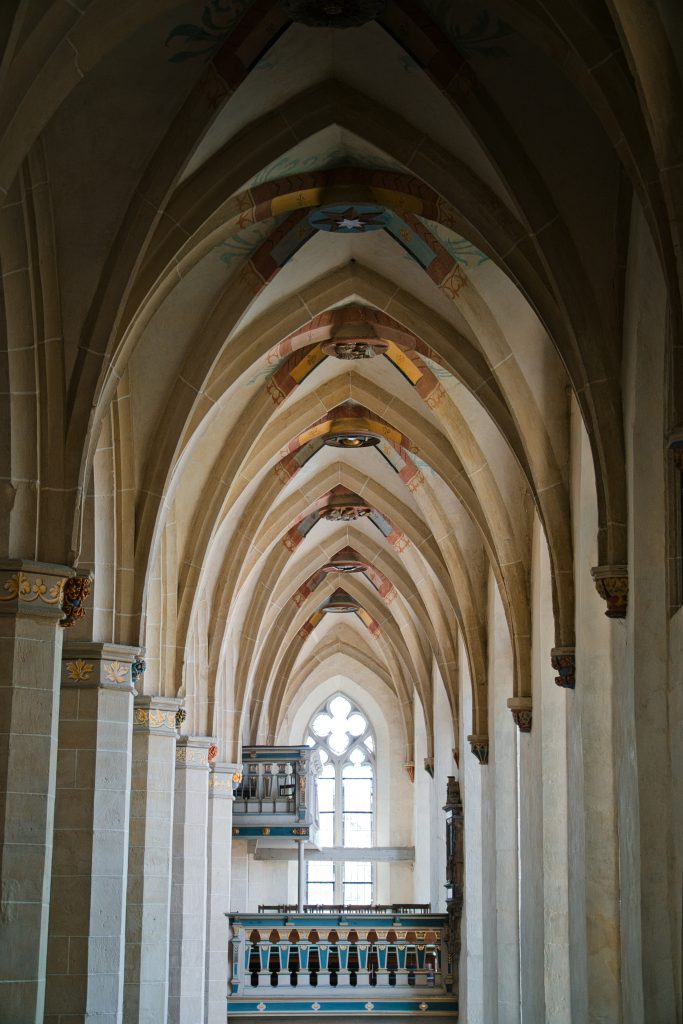
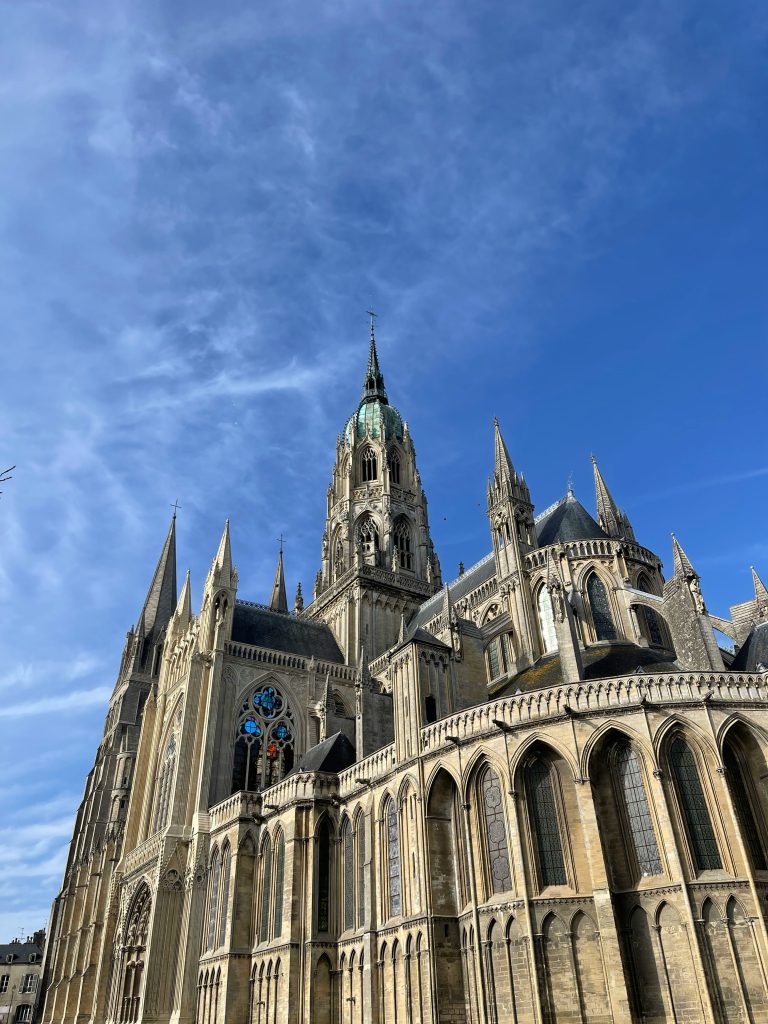
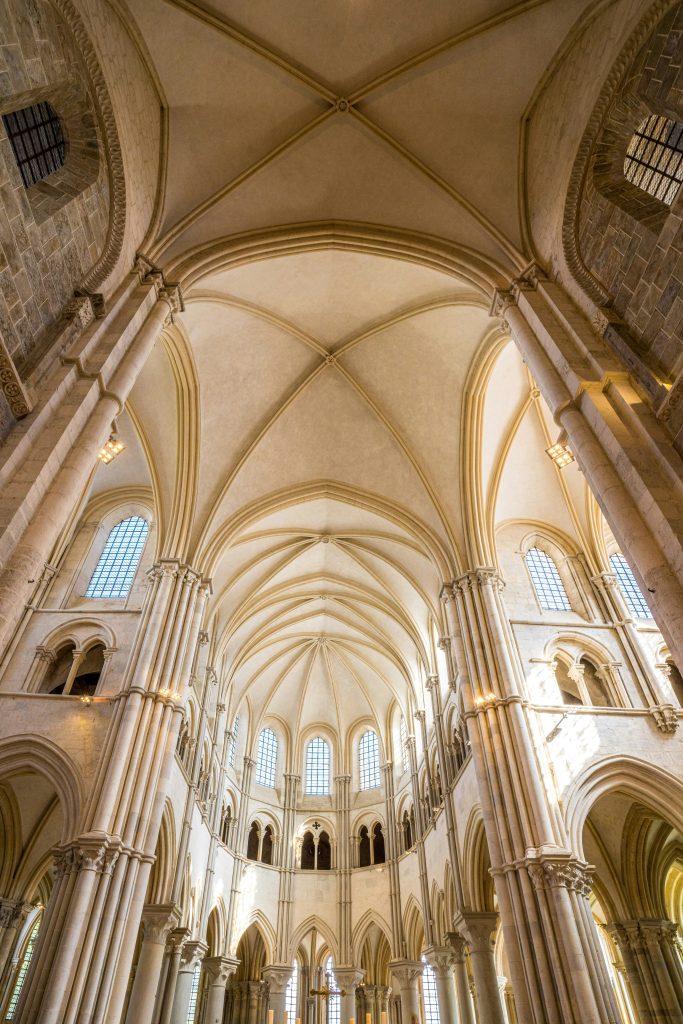
Standing tall since the 11th century, this Gothic beauty offers more than just stunning architecture. It’s a testament to resilience. Imagine how many chapters of history this cathedral has witnessed, from the Norman Conquest (it originally housed the famed Bayeux Tapestry) to the liberation of the town in 1944.
After a peaceful morning exploring the cathedral and town, treat yourself to one of the area’s sweetest specialties: Les Sablés d’Asnelles. These tender butter cookies, crafted nearby since 1904, practically melt in your mouth. Normandy’s rich milk shines through every bite — a delicious link between the land and its traditions.
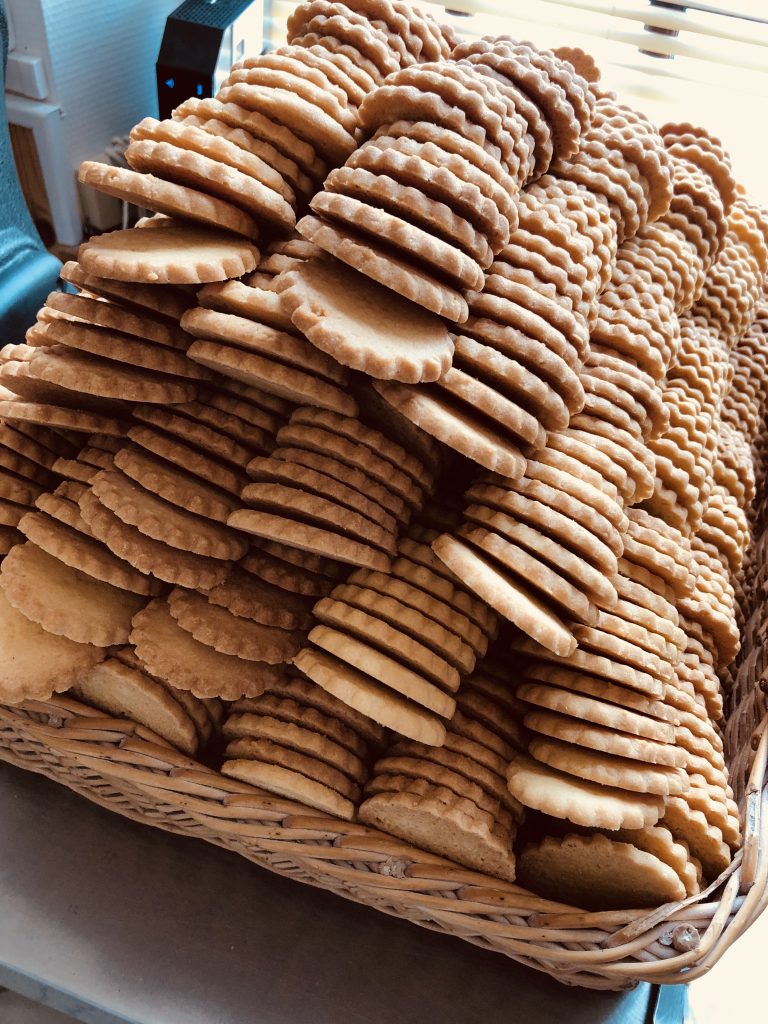
A Moving Journey: The WWII Sites
Just beyond Bayeux, the landscape changes — not visually, but emotionally. The beaches, fields, and cliffs of the Normandy coast are beautiful, yet every step here whispers stories of bravery, sacrifice, and freedom hard won.
Omaha Beach and the American Cemetery
The name Omaha Beach carries enormous weight, and seeing it in person is sobering. Today it looks serene, waves gently lapping the shore, but it’s impossible to forget what unfolded here on D-Day.
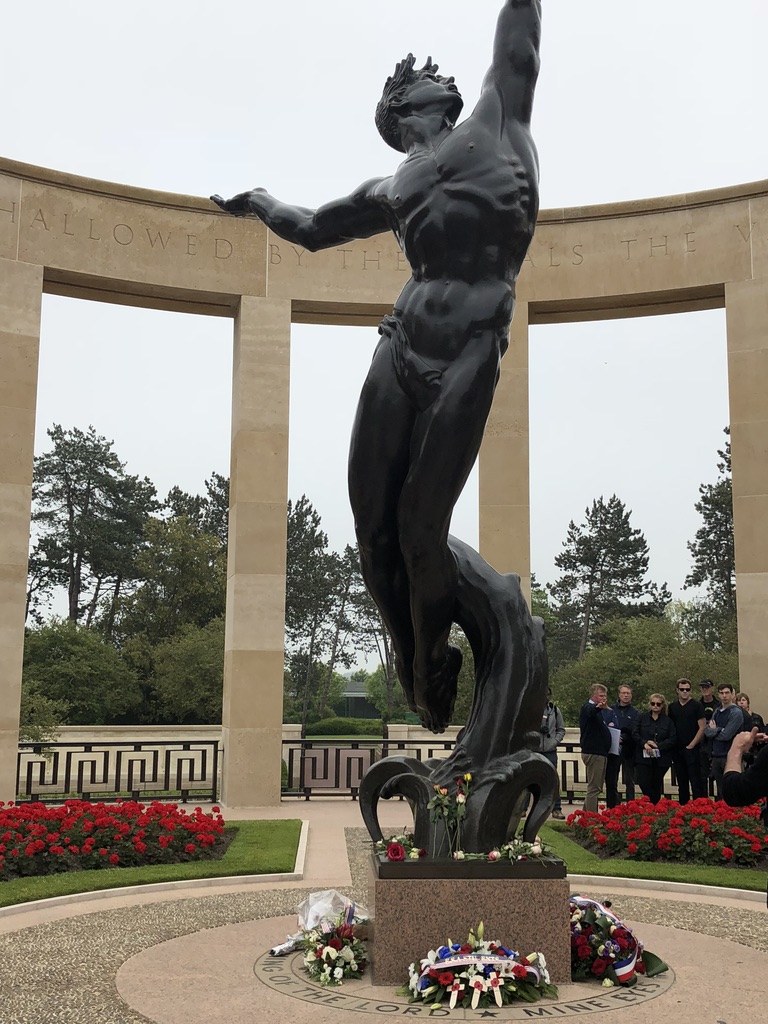
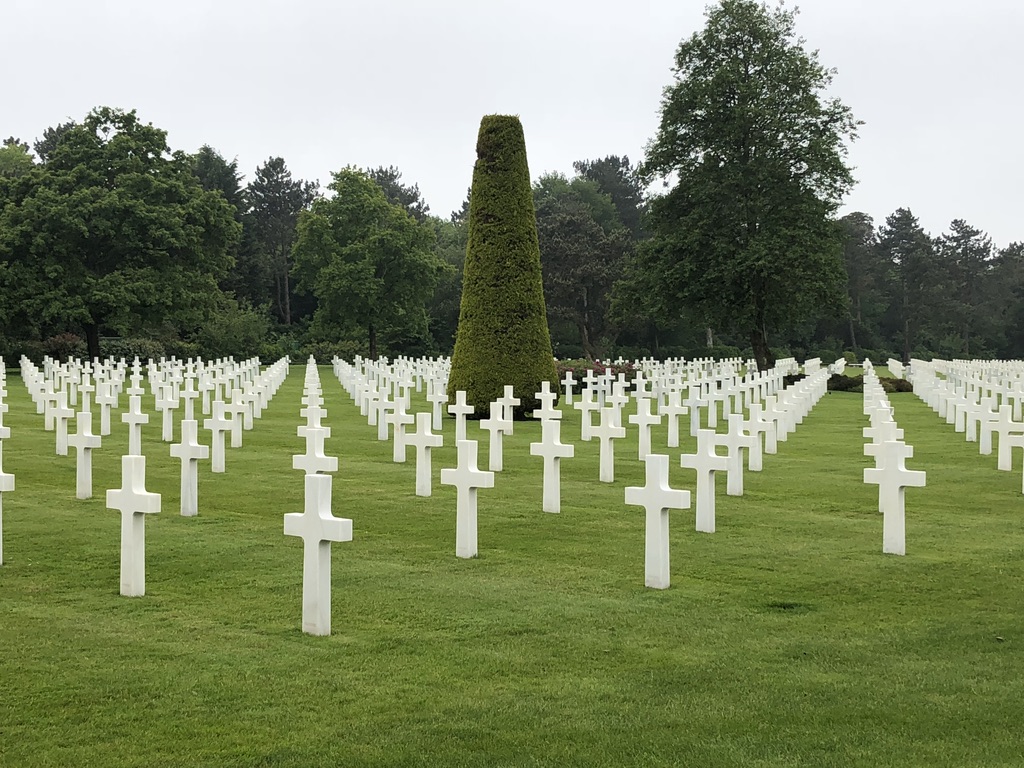
Just above, the Normandy American Cemetery overlooks the beach. Row after row of white crosses and Stars of David stretch toward the horizon — each one representing a young life lost far from home. Walking among them is incredibly humbling. The site is impeccably kept and profoundly respectful, with a small visitor center that tells the stories behind the statistics.
Les Braves: A Powerful Tribute
Standing on Omaha Beach itself, the Les Braves memorial commands your attention. Its sweeping stainless steel sculptures rise from the sand, honoring the courage of the soldiers who stormed these shores. “The Wings of Hope,” “Rise, Freedom!” and “The Wings of Fraternity” — the names of each element remind us not only of sacrifice, but of optimism. It’s both art and remembrance, and its presence feels deeply personal.
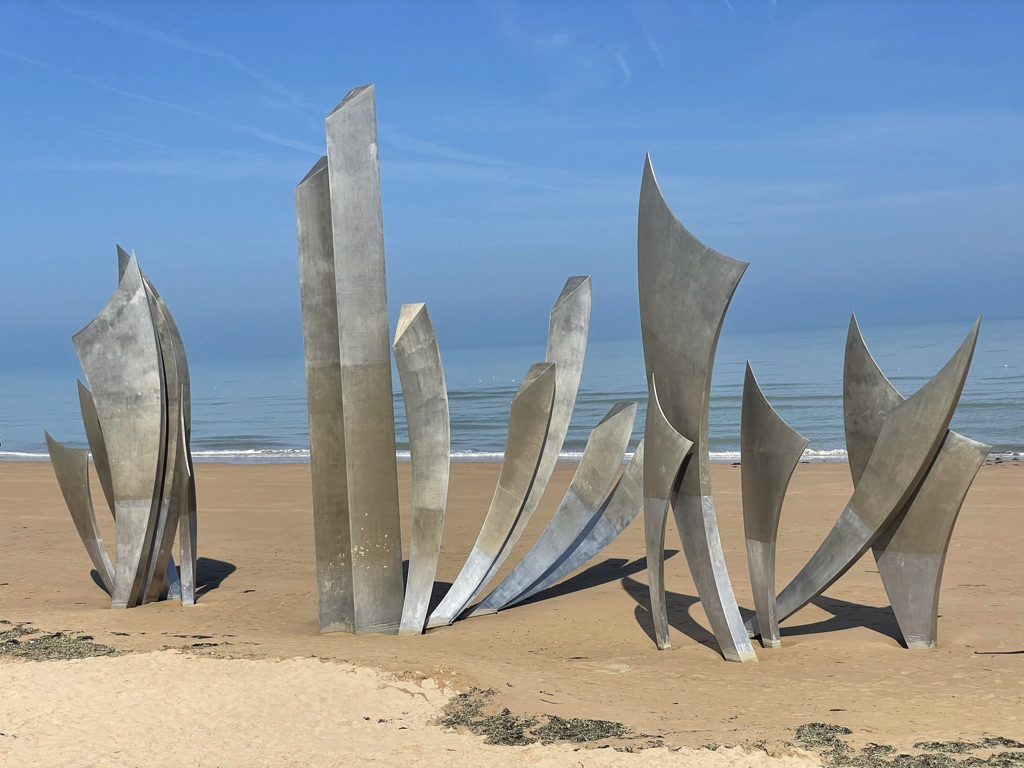
Pointe du Hoc
Not far from Omaha, Pointe du Hoc offers dramatic cliffs that once held German gun emplacements. The U.S. Army Rangers scaled these sheer cliffs under heavy fire to help turn the tide of the invasion. Standing there today, looking down at the jagged rocks below, you can only imagine the courage it took to climb. Craters from the bombardment remain, silent witnesses to the violence of that day.
Utah Beach and Sainte-Mère-Église
To the west, Utah Beach tells a slightly different story. The landing here was far less deadly thanks to strong leadership and a little bit of luck. Still, the sense of gravity remains.
A visit to the nearby village of Sainte-Mère-Église adds another layer. Famous for the paratrooper who got caught on the church steeple (a mannequin still hangs there to honor him), the town embraces its history while celebrating the friendship forged between Americans and Normans.
More Than a Battlefield
What strikes me most about visiting these sites is not just the sense of loss — though that is undeniable — but the sense of connection. The locals have not forgotten. To this day, American visitors are greeted with warmth and gratitude. Flags fly proudly in front of homes and businesses, not only on anniversaries but all year long.
The stories are not just written on plaques or in museums — they are passed down from grandparents to grandchildren, told at the dinner table, and shared over cider in village cafés.
Speaking of which, Normandy’s bounty is never far away. To reflect after your visit, consider stopping at Ferme de la Sapinière, just outside Omaha Beach. This family-run farm produces excellent Cidre, Pommeau, and Calvados — all made from local apples. A tasting here feels restorative, and somehow symbolic: from devastation, renewal.
For a sweet finish, pick up Caramels d’Isigny. These creamy, soft caramels — made with milk from Normandy’s famous cows — are beloved all over France. Somehow, enjoying them here, they taste even sweeter.
A Place to Remember — and to Hope
Bayeux and the WWII sites offer more than history lessons. They offer perspective. Walking through these places leaves you reflective yet thankful, and somehow a little more hopeful about humanity.
If you visit Normandy, make time for this chapter of its story. It will stay with you long after the beaches fade in your rearview mirror.
- More to Explore in the Normandy Region

